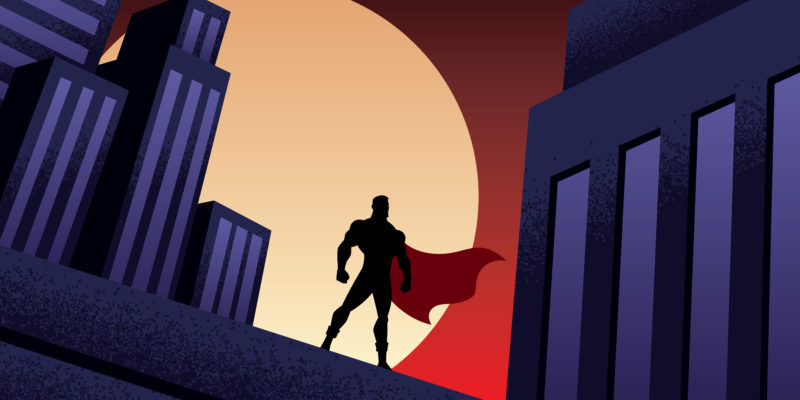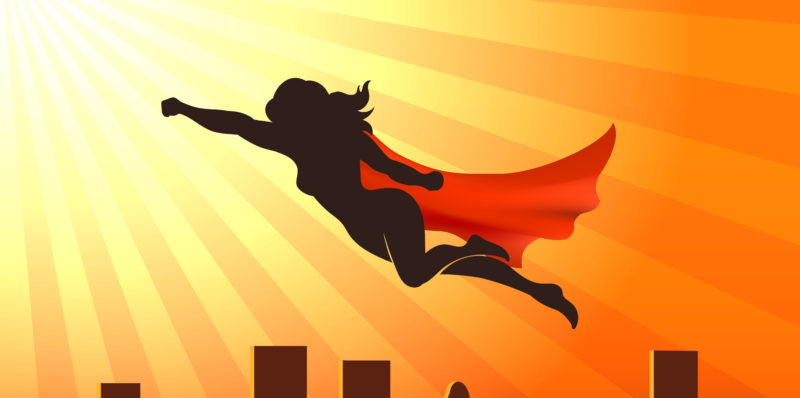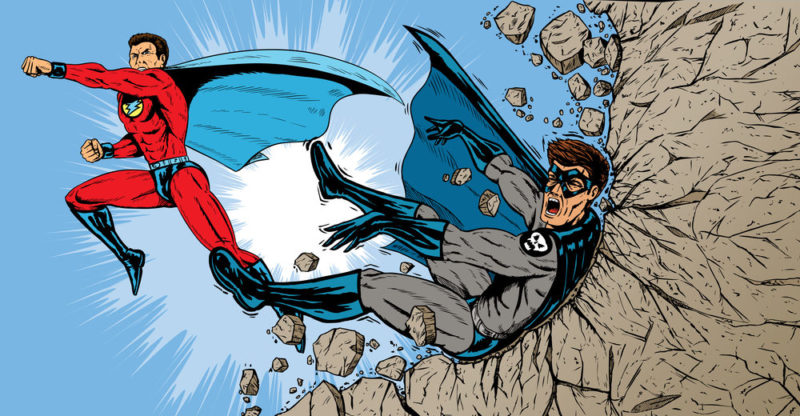We explain what a hero is, its characteristics and the definition of an antihero. The types of heroes in literature and the path of the hero.
What is a hero?
A hero or heroine is a person who differs from ordinary people for having performed some feat , virtue or deed that is considered valuable. For example: A man who saves a family from a fire or a person who defends the injustices of his community .
In many cases, heroes are called characters in history who were courageous , defended a cause or who stood out in some field or discipline. For example: Simón Bolívar or Nelson Mandela .
The term "hero" comes from the Latin heros and is widely used in literature to define the protagonists of myths , tragedies , comics and epics .
From a psychological and social point of view, a hero frames traits or characteristics that every man/woman desires and admires and stands as an example to follow. The hero is noted for selflessly performing a deed or act of kindness toward others or facing great danger or challenge and succeeding.
Types of heroes in literature

The figure of the hero acquires different characteristics according to the type of literary work that he stars in. Some types of heroes are:
- Mythological hero . In ancient mythology , the term "hero" was used to define those beings who were the fruit of a god and a human , that is, demigods. For example: Hercules.
- tragic hero . In classical tragedies , the figure of the hero was used to define the main character of the play, who has heroic and kind qualities, but due to an unfortunate event, he takes the wrong path and fails. For example: Oedipus the King.
- epic hero . In the epics, the figure of the hero was used to represent the protagonist of the epic and that he has outstanding physical qualities that allow him to face obstacles and succeed. For example: King Arthur .
- romantic hero . In the works that emerged during Romanticism , the figure of the hero was used to describe the protagonist of the story, who is perceived as someone who does not feel comfortable with the society that surrounds him, who is introspective, arrogant, lonely and is usually an artist. and defend their ideals. For example: Don Juan.
- superhero . In fantastic literature, the character of the hero is used to define a person who has supernatural powers and who, thanks to them, performs different acts of kindness in defense of the human race. For example: Superman.
Characteristics of a hero

The main characteristics of a hero are:
- He is not usually, until the moment of his feat or deed, a well-known, famous, powerful or wealthy personality.
- He is an example to follow for the rest of the members of society, due to his scale of values , his worth and inner strength.
- He unfolds in a context in which the circumstances are unfair and he must act in favor of justice .
- He risks his own life to save other people who, in most cases, are people unknown to him.
- He feels a deep and absolute empathy and, faced with an act of injustice, he proposes himself as "the only possibility of salvation".
- It does not break social or moral laws.
- He is selfless and acts according to his heart and sense of truth.
- He has a certain enemy. In the case of literature , the enemy is personified as an evil, cruel and unfeeling figure. The enemies of social (or real) heroes are usually nature, the figure of the state, or other citizens .
- He trusts himself and recognizes his abilities and talents. Other people also trust him.
- He faces dangers that, for other people, are impossible to avoid.
- You can have certain physical, mental or psychic characteristics and make use of them to overcome difficulties. The superheroes of fantastic literature usually have powers such as: laser vision, body elasticity, physical strength, among others. For their part, ingenuity, intelligence or physical abilities are the powers that heroes in real life use to resolve conflicts.
Hero's Journey
The hero's journey is an outline or structure used in the telling of many stories and screenplays . It was first detailed by the American writer Joseph Campbell in his work The Hero with a Thousand Faces (1949).
Campbell analyzed the classical mythological stories and concluded that they are all built on a common structure. This structure was defined with the name of "hero's journey" and is made up of a set of steps or milestones . These twelve stages are:
- ordinary world . The hero lives in a world that he knows and in which he is comfortable.
- Call to Adventure . The hero is presented with a challenge due to a specific threat or situation.
- I reject the call . The hero does not take charge of the call out of fear or insecurities.
- Meeting with the teacher . The hero receives from someone or something an impulse that gives him the strength to answer the call.
- Threshold Crossing . The hero begins the adventure by entering into what he does not know and recognizes that there is no turning back.
- Tests, Allies and Enemies . The hero faces new challenges and along the way begins to recognize who are allies and who are enemies.
- Approach to the test . The hero is about to reach the greatest of challenges, at this stage doubts and insecurities can resurface with force.
- maximum test . The hero faces this challenge, which can be internal or external, and must use all available tools to overcome it.
- reward . Once the test is passed, the hero receives the reward, which can be material or immaterial.
- The way back . The hero receives his reward and must begin the journey in reverse, but focusing on not losing what he has achieved along the way.
- Resurrection . The hero rises to the challenge again and achieves an ultimate transformation.
- return . The hero returns with everything he has achieved along the way, he is a transformed person.
The figure of the antihero

The figure of the antihero is used in literature to define that character who has antagonistic qualities to those of the conventional hero . The antihero is often characterized as withdrawn, weak, or lonely, and seems unprepared to face certain challenges.
However, in many stories the antiheroes stand as protagonists by performing heroic acts, although they usually do so through methods or forms that are not fully accepted by society. In many cases, the antihero carries out heroic actions but does not act motivated by the common good but by personal interests.
The idea of antihero is often wrongly related to that of villain , which is the character against whom the protagonist fights and is usually responsible for the injustices that motivate the hero to act and defend the values of justice and peace.
The above content published at Collaborative Research Group is for informational and educational purposes only and has been developed by referring to reliable sources and recommendations from technology experts. We do not have any contact with official entities nor do we intend to replace the information that they emit.
Passionate about understanding and contributing to a world that does not stop changing. New forms of Work, Sustainability and Technology. For many years he has worked as a creative for large international companies. He has a Ph.D. in information technology and he has been doing quantitative research in the interdisciplinary areas of information systems, cyber security, data analytics and artificial intelligence. He continue to look for creative solutions through technology to help companies to be more humane and sustainable..
Leave a reply
Your email address will not be published. Required fields are marked *Recent post

Sport: What Is It, Types, Risks, Features, Characteristics and Examples

Dogs: Emergence, Features, Characteristics, Feeding and Breeds

Story: Definition, Elements, Structure, Features and Characteristics

